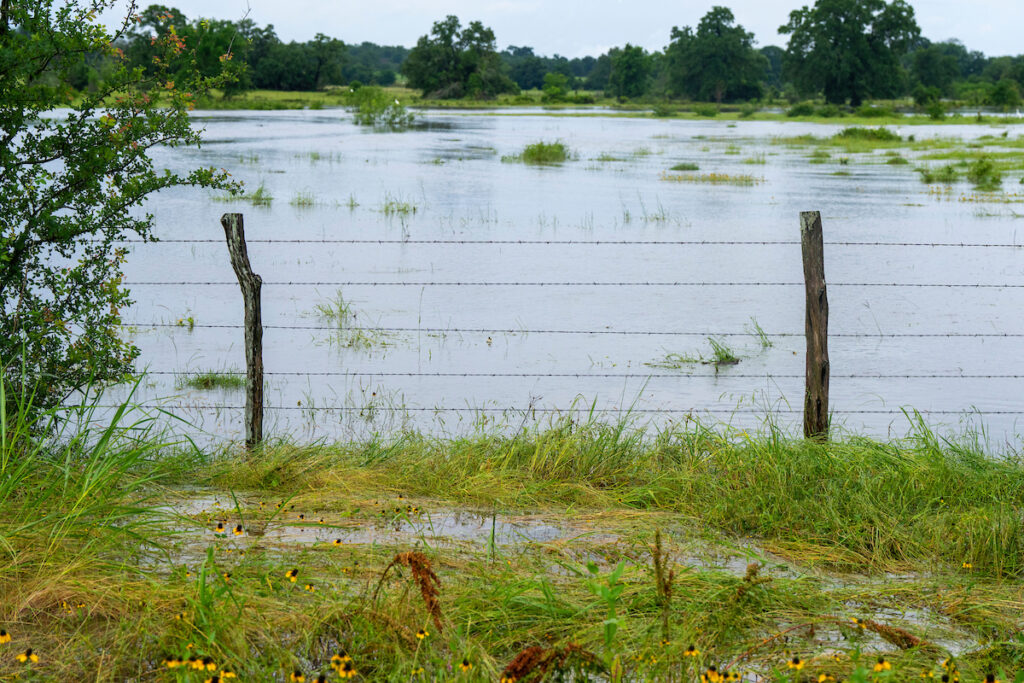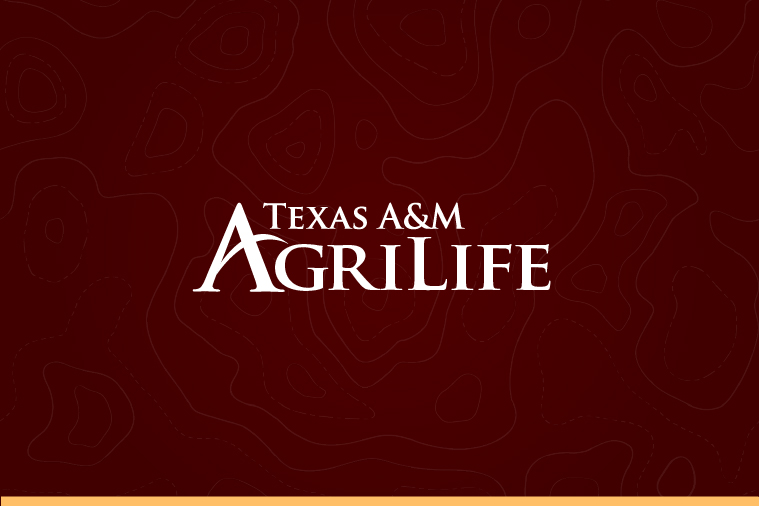Prolonged heavy rainfall causing flooding, livestock safety concerns
AgriLife Extension Disaster Assessment and Recovery experts poised to help, offer flood response tips
Texas A&M AgriLife Extension Service Disaster Assessment and Recovery strike teams are ready to be deployed as rivers in parts of Texas continue to overflow due to heavy rainfall flooding this week.
“Our Disaster Assessment and Recovery agents are ready to quickly respond to any immediate needs,” said Monty Dozier, Ph.D., program director, College Station. “We are also on standby to assist the Texas A&M Veterinary Medical team if activated in response to local pet owners who may need assistance with flooded homes or recovering animals.”
Moving to higher ground
River flooding is a primary concern for both homeowners and livestock owners. The teams are prepared to assist with local pet owner needs, pet health as well as livestock recovery efforts in low-lying areas.

Livestock owners should be mindful of several concerns related to cattle that have been exposed to flooded pastures or low-lying areas. These include:
- Contaminated food and water, standing or stagnant water.
- Sick, diseased or displaced animals.
- Damaged gates, fences.
- Eroded or unstable creek beds.
“After a flood, it’s important to inventory and identify any missing animals, remove potentially dangerous objects from pastures and quickly repair any damaged fences or gates,” said Bryan Davis, DAR South region chief, Seguin.
Davis also said removing objects from pastures protects more than livestock.
“That protects farm workers and machinery from being injured or damaged when mowing pastures that have grown over and hidden these objects.”
Livestock recovery tips
Livestock owners should check on the condition of their animals exposed to high water, Davis said.
“It is best to move them out of flooded areas and into dry or covered areas, if possible, then check them for injury and render any necessary first aid as able until a veterinarian can be found,” Davis said.
If an animal is injured, clean the wound and dress it with an antibiotic before covering the wound with a bandage.
“Then contact your vet and provide a full description of the injury, so your vet can prioritize the treatment of your animal,” he said.
Davis said animals that have not been able to eat for one or more days should be given a little feed over the first few days, then gradually increase the ration over a week’s time. He also recommends providing access to hay until pastures can be inspected for hazards and forage has time to recover. Also check for signs of illnesses, including respiratory disorders like pneumonia.
“Coughing or hard breathing, non-clear mucus running from the nose could be indicators,” Davis said. “Later you might notice crusty eyes and a lowered head. You’ll want to separate these animals and get them treatment as soon as possible.”
Longer-term considerations
Producers should also be looking for the impacts of extended exposure to wet conditions, Davis said. Foot rot or leptospirosis is another typical problem with cattle after flooding and can even occur after an extended rainfall.
Another long-term consideration, especially in low-lying areas, is biting pests, he said.
“It’s important to make sure all livestock vaccinations are current and to apply insect repellents to protect livestock from what will likely be increased mosquito and fly populations,” Davis said.
Protecting livestock from the hazards of flooding and other natural disasters and emergencies is essential to help ensure continued success of farming and ranching operations, Dozier said. Contingency planning and enacting proactive emergency plans can mitigate financial losses, including animals.
“The recent and more distant past have shown us there are any number of natural or manmade disasters or emergencies that can potentially affect an agricultural enterprise,” he said. “Replacing livestock can be frustrating, time-consuming and an expensive proposition, so this is another instance where some preparation in the short term can save a lot in the long term.”
Texashelp has information available on its Disaster Information for Farms and Ranches resource page for those impacted by flooding and other disasters on the farm and ranch.





